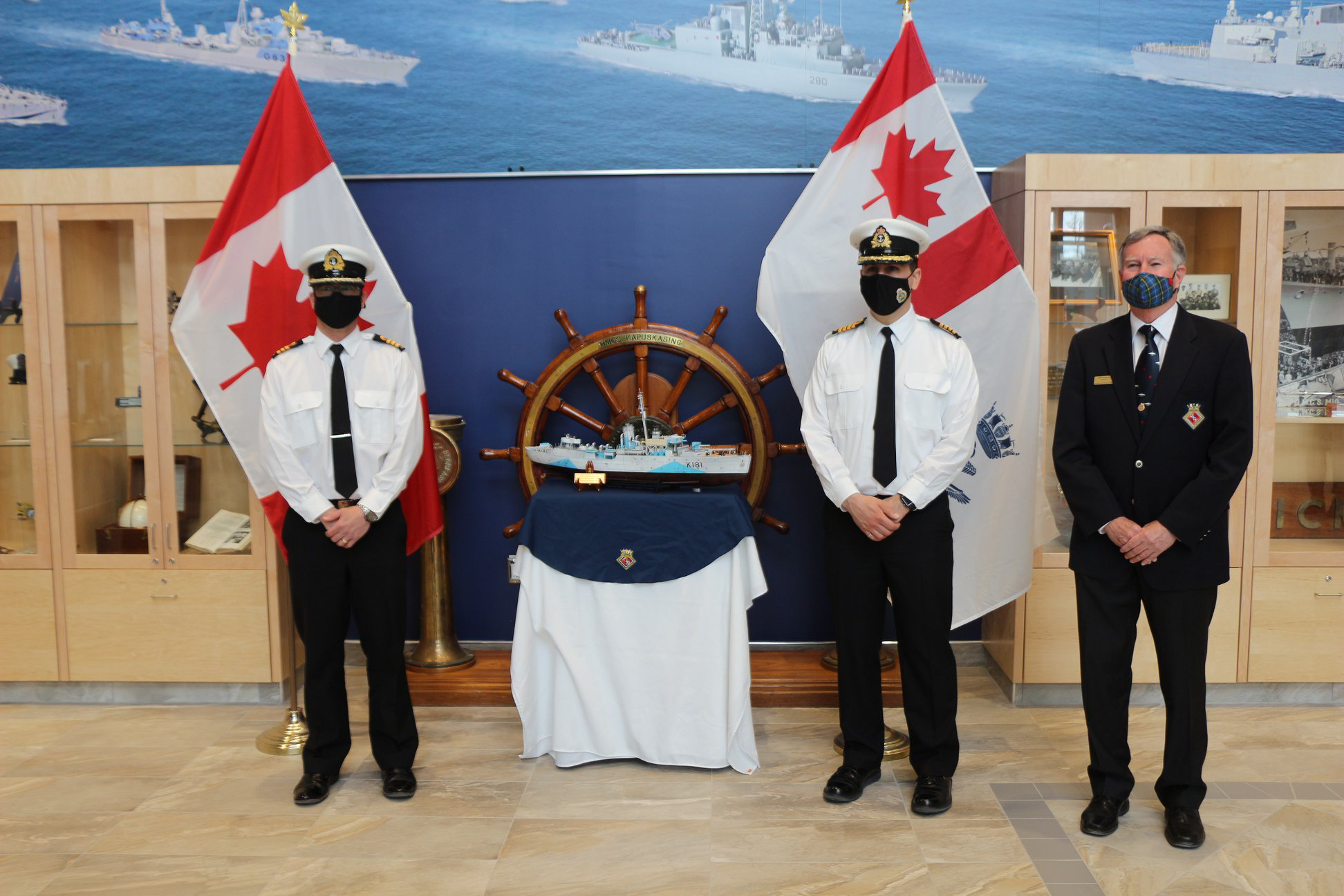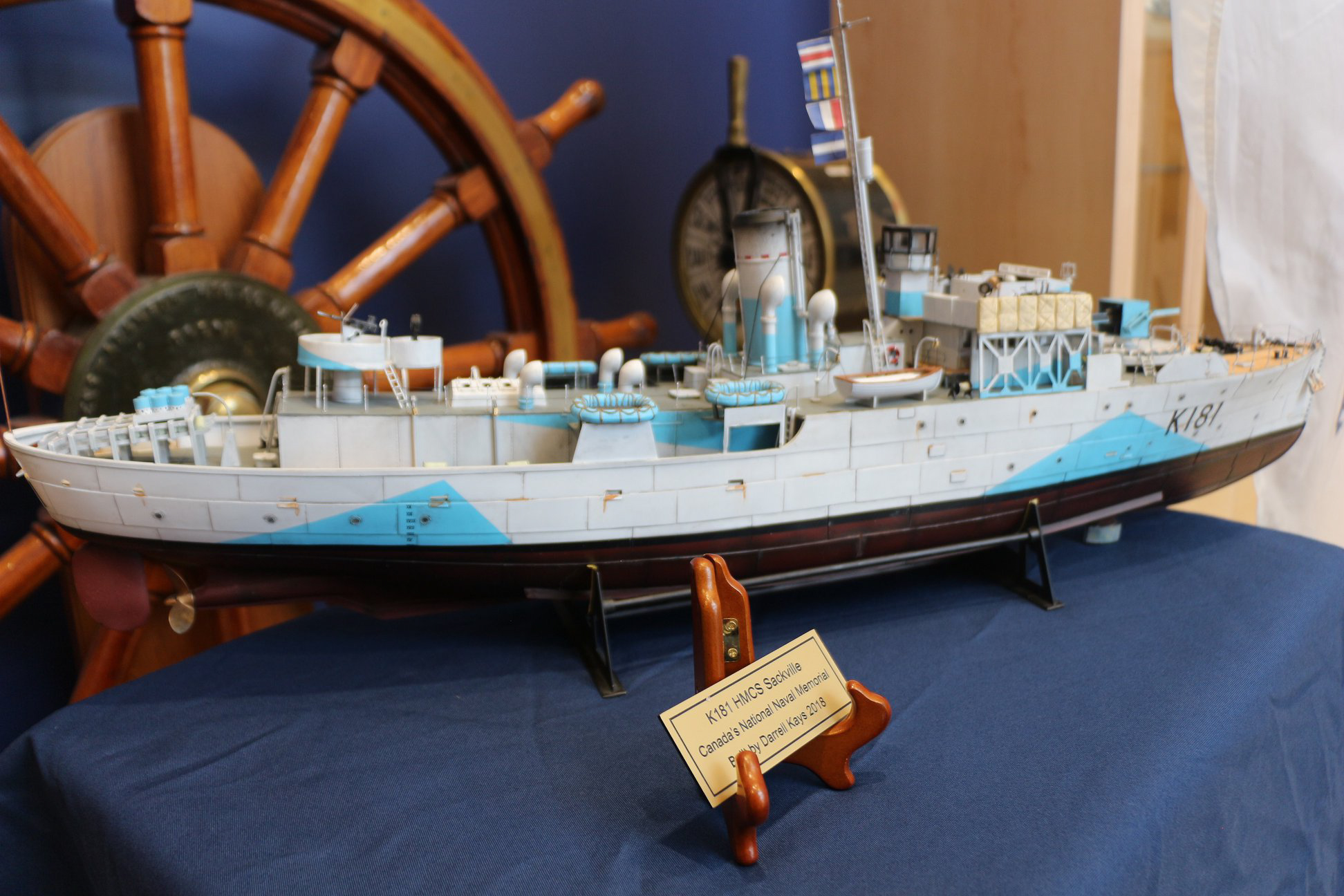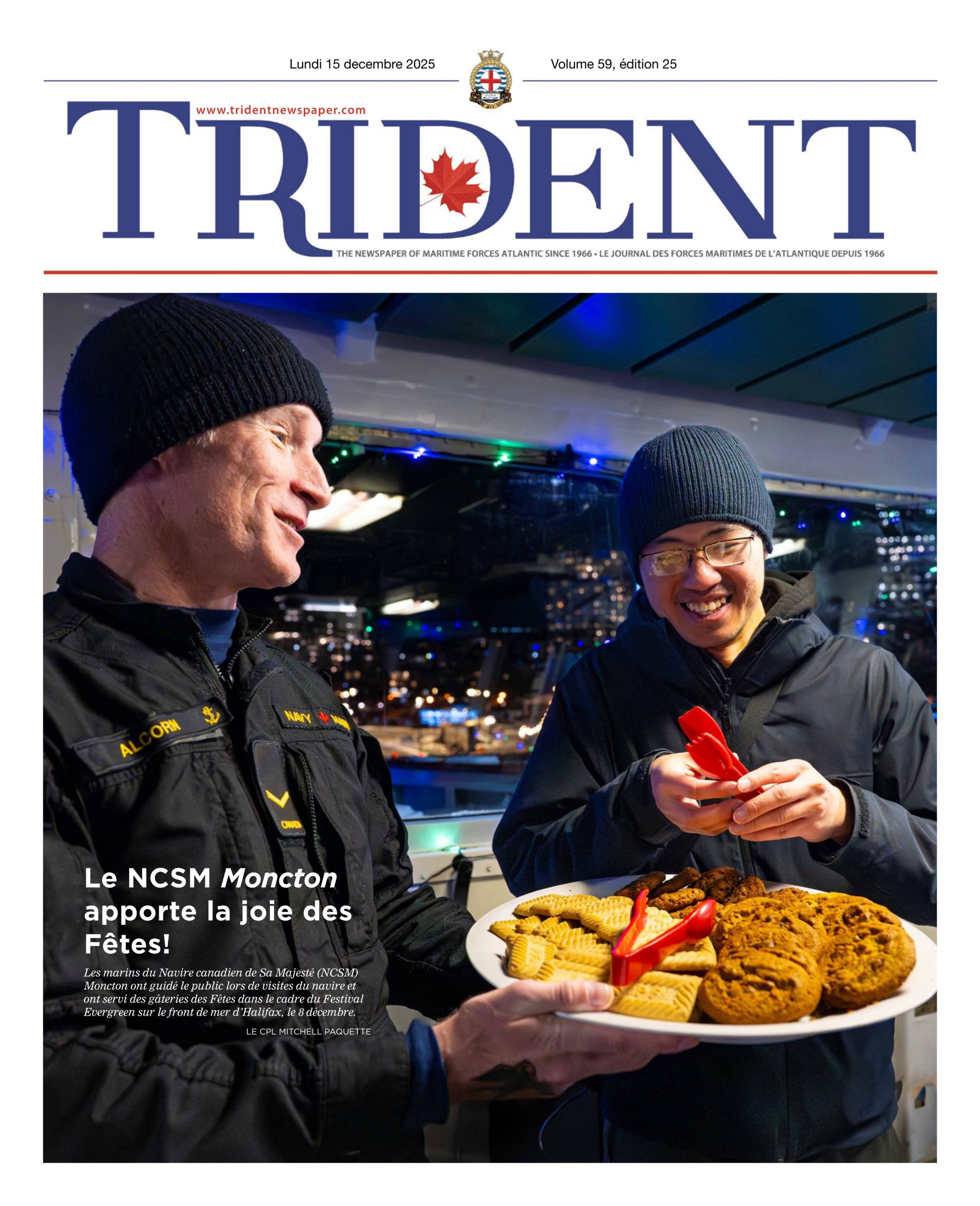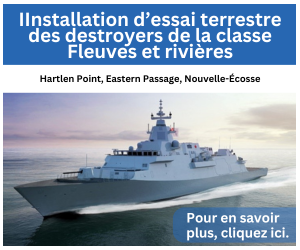
LT(N) ALEX GRINTON, NFS(A)
A piece of Navy history: NCSM Sackville model presented to NFS(A)
Par Joanie Veitch,
Équipe du trident
As the hull painting of HMCS Sackville neared completion in the submarine shed at HMC Dockyard, a replica of the Navy’s memorial ship was being presented to Naval Fleet School (Atlantic), where it is now showcased in a display cabinet in the foyer of the new building, along with other naval artifacts.

LT(N) ALEX GRINTON, NFS(A)
“To have the Sackville displayed here is fitting,” said Cmdre (ret’d) Bill Woodburn, Chairman of the Board of the Canadian Naval Memorial Trust, as he presented the replica to NFS(A) Commanding Officer, Cdr David Roberge, on April 1st. “This ship represents so much to our Navy. What we’re trying to do is make Sackville a living memorial, not only to those who perished at sea in the past but to every sailor that serves today.”
The model was built and gifted to the Canadian Naval Memorial Trust by LCdr (ret’d) Darrell Kays, a retired submariner (not at the event), who Woodburn described as having “an undying passion for submarines and the Navy.”
Addressing the significance of HMCS Sackville, Woodburn touched on both the ship’s history as a Flower-class corvette and its role escorting convoys of merchant ships safely during the Battle of the Atlantic. He also noted how Sackville and the corvettes contributed to Canadian shipbuilding during and after the war, creating a greater sense of identity for the Canadian Navy as a whole.
“This ship represents the shipbuilding industry in Canada, Sackville and the corvettes were small ships that could be built at shipyards across the country — and that’s what happened. A lot of us feel that it was with these ships that our Navy began…and we never looked back,” Woodburn said.
Unlike other Flower-class corvettes, which were mostly scrapped following the end of the war, Sackville was converted into an oceanographic research vessel in the 1950s and remained in service until 1982. In 1983, the newly formed not-for-profit Canadian Naval Memorial Trust took over guardianship of the ship and worked to restore it to its original design.
Today the Canadian Naval Memorial Trust has about 1,000 members worldwide, mostly in Canada, the United Kingdom and the US, Woodburn told those in attendance at the presentation.
Since September of last year, Sackville has been in the submarine shed at FMF Cape Scott for much-needed maintenance and repair, most notably cladding the rusted and thinning hull with quarter-inch steel plates up to one foot above the water line, work which first began in 2018 and was completed this past winter.
Cdr (ret’d) Gary Reddy, the ship’s current Commanding Officer, said the final paintwork was nearing completion and Sackville will soon be ready to come out of dry dock and go back to her berth as a museum ship on the Halifax waterfront near the Maritime Museum of the Atlantic. It’s a moment he and the rest of the ship’s crew are looking forward to.
“HMCS Sackville and the corvettes were the “workhorses of the Navy” during the war,” he said. “Sackville is the last remaining ship of her kind. Just to be able to walk on the decks and touch the bulkheads, it’s a physical piece of history. Everyone who visits or works on the ship feels that, and feels a sense of emotional attachment to her.”






